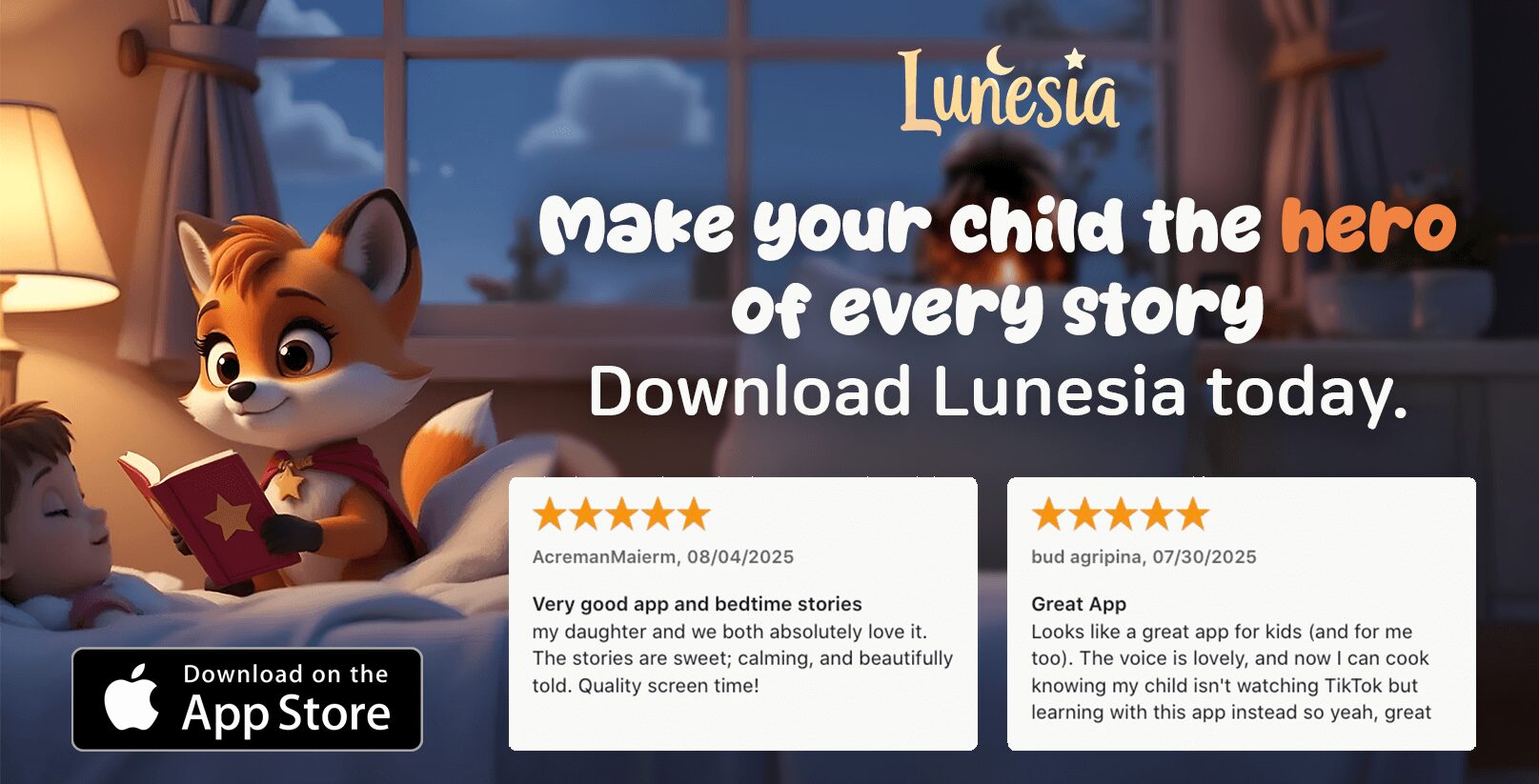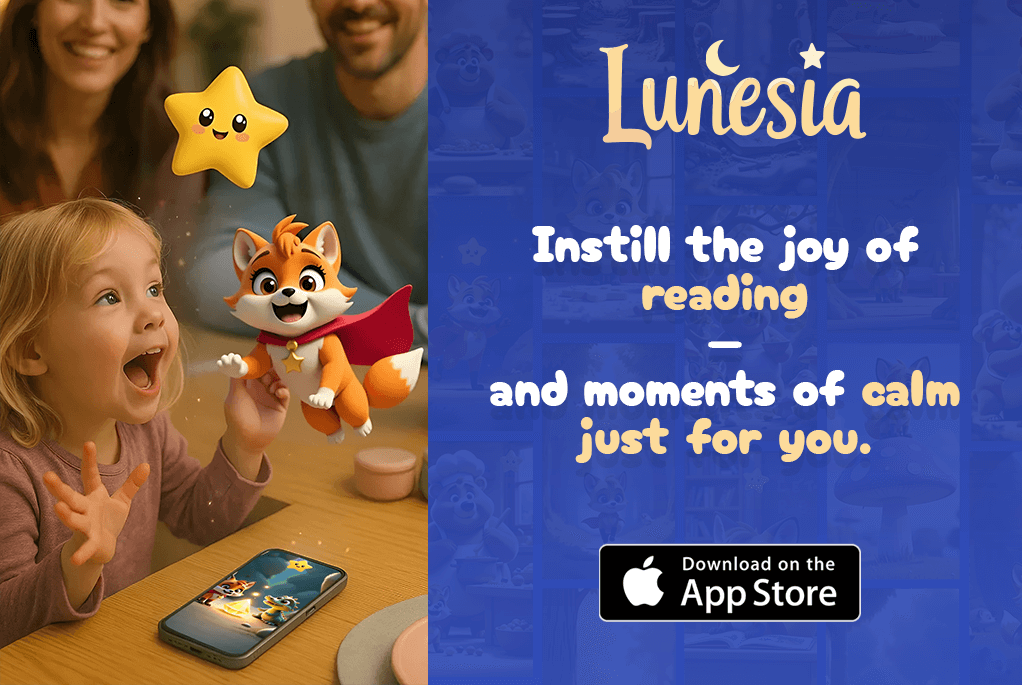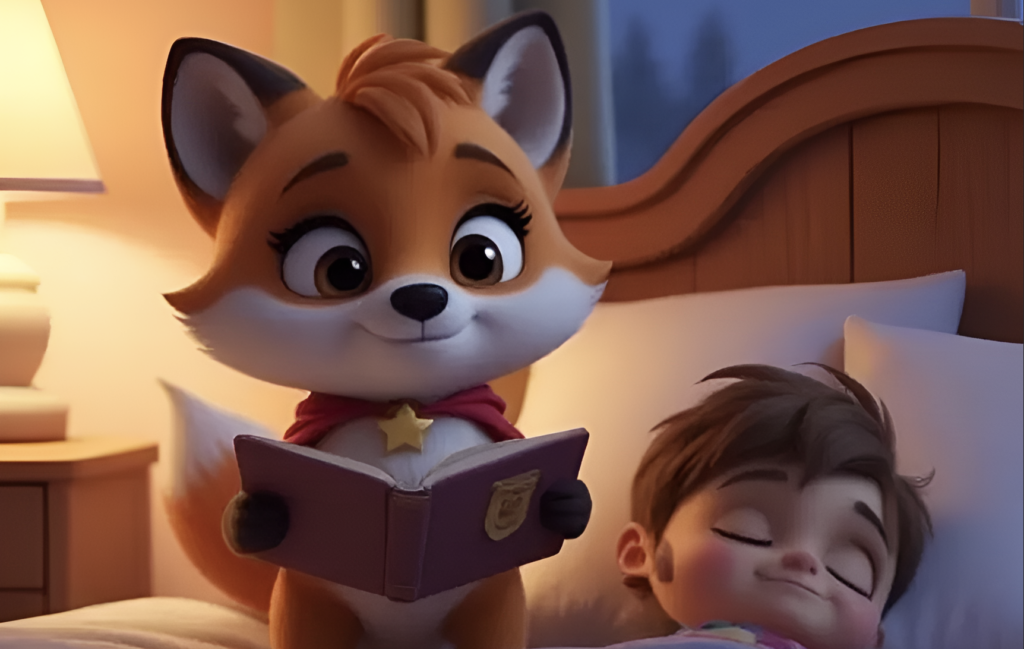Do you remember the first story that made you laugh, cry, or dream? For me, it was a well-worn copy of Peter Rabbit, its pages filled with adventures that felt as real as the world outside my window. Stories have always been a bridge between imagination and reality, especially for children. They teach, inspire, and connect us across time.

From the earliest campfire tales to today’s digital narratives, the way we share stories has changed. Yet, their purpose remains the same: to nurture young minds and preserve culture. Whether it’s a classic book or a TikTok video, storytelling continues to shape how children see the world.
In this article, we’ll explore how stories have adapted over the years. We’ll dive into the neuroscience behind their impact and discover why characters like Peter Rabbit still capture hearts today. Join me as we celebrate the magic of storytelling and its enduring role in child development.
Introduction: The Timeless Power of Children’s Stories
Have you ever noticed how a simple story can light up a child’s eyes? It’s a universal experience, one that transcends time and culture. Stories have always been a way to teach, inspire, and connect. From ancient fables to modern YouTube videos, they remain a cornerstone of childhood.
I remember my grandmother reading me bedtime stories. Her voice brought characters to life, and those moments created a bond that still feels alive today. This generational connection is one of the many reasons storytelling is so powerful. It’s not just about entertainment; it’s about sharing values and shaping perspectives.
Neuroscience shows that storytelling activates multiple brain regions. It helps children process emotions, build empathy, and develop critical thinking skills. Dr. Amanda Gummer’s research highlights how parent-child reading routines strengthen emotional bonds and cognitive development.
Interestingly, ancient Greek fables and modern YouTube creators use similar strategies. Both rely on relatable characters and engaging narratives to teach important lessons. UNESCO found that 78% of cultures use animal characters in foundational stories, proving how universal this approach is.
Modern literature, like Barbara Spangler’s And God Smiled, continues this tradition. It blends timeless values with contemporary themes, showing how stories can adapt while maintaining their core purpose. Whether through books or digital media, storytelling remains a vital part of life.
| Aspect | Ancient Storytelling | Modern Storytelling |
|---|---|---|
| Medium | Oral traditions, scrolls | Books, videos, apps |
| Characters | Animals, mythical figures | Animals, relatable humans |
| Purpose | Teach morals, preserve culture | Teach morals, entertain, educate |
The Origins of Storytelling: Oral Traditions
Long before books, stories were shared by the glow of firelight. These oral traditions were the heartbeat of communities, passing down wisdom, morals, and history. From the Zulu creation myths to the Greek tales of Prometheus, every culture has its own way of preserving its identity through spoken words.
Myths, Legends, and Fables
Myths and legends have always been a cornerstone of storytelling. Think of Aesop’s fables, where animals teach timeless lessons. Or the Panchatantra, an ancient Indian collection of animal stories that still resonate today. These tales weren’t just entertainment; they were tools for teaching values and life skills.
One of the most fascinating techniques is the frame story, like in 1,001 Nights. A larger narrative holds smaller stories together, creating a rich tapestry of lessons and adventures. This method shows how creativity has always been at the heart of storytelling.
Cultural Variations in Oral Traditions
Storytelling varies widely across the world. In West Africa, the Anansi spider tales traveled to the Caribbean, adapting to new cultures while keeping their core messages. Similarly, medieval European scribes wrote down epic poems like Beowulf, while Chinese poets of the Tang Dynasty crafted lyrical verses.
Research from the Smithsonian reveals that 92% of oral traditions include moral lessons. For example, Navajo coyote tales inspired modern cartoons like Wile E. Coyote. These stories remind us that, no matter the culture, the purpose of storytelling remains universal: to teach, inspire, and connect.
From campfires to digital screens, the essence of storytelling hasn’t changed. It’s still about sharing the human experience, one tale at a time.
The Written Word: The Birth of Children’s Literature
Centuries ago, the first books for young minds were crafted with care and purpose. These early works weren’t just stories; they were tools for teaching morals, values, and life skills. From religious texts to playful rhymes, the written word became a powerful way to shape young hearts and minds.

Early Manuscripts and Moral Tales
In the 15th century, hornbooks were among the first educational tools for children. These simple wooden boards featured the alphabet and basic prayers. By 1656, “Spiritual Milk for Boston Babes” became the first U.S. children’s book, blending religious lessons with practical advice.
Puritan works like “A Token for Children” focused on moral instruction, much like today’s social-emotional learning (SEL) books. These early writings laid the groundwork for modern literature, showing how stories can teach and inspire across generations.
The Impact of the Printing Press
The invention of the printing press in the 15th century revolutionized children’s literacy. Works like the Gutenberg Bible paved the way for Mother Goose rhymes and other beloved tales. The British Library notes a significant increase in children’s literacy post-printing press, highlighting its lasting impact.
In 1658, John Amos Comenius published Orbis Pictus, the first picture book for children. This innovative work combined visuals with text, much like today’s interactive eBooks. It showed how the written word could engage young readers in new and exciting ways.
From medieval manuscripts to modern parenting guides, books have always been a bridge between generations. They carry lessons, love, and the timeless magic of storytelling. Explore more about the history of children’s literature to see how far we’ve come.
The 18th and 19th Centuries: The Golden Age of Children’s Books
The 18th and 19th centuries brought a wave of creativity that reshaped children’s literature forever. This period, often called the golden age, saw a shift from moral lessons to stories filled with adventure and imagination. It was a time when books became more than just tools for teaching—they became gateways to new worlds.
John Newbery and the Rise of Children’s Publishing
In 1744, John Newbery changed the game with his groundbreaking book, A Little Pretty Pocket-Book. This wasn’t just a book; it was the start of the first children’s book franchise. Newbery’s genius lay in his marketing strategies, which included colorful illustrations and playful rhymes. He understood that children’s books could be both entertaining and educational.
Newbery’s work marked a turning point in the 18th century. Before him, most children’s literature was didactic, focusing on moral instruction. His approach paved the way for a new era where stories could spark joy and curiosity. Today, the Newbery Medal honors outstanding contributions to children’s literature, a testament to his lasting impact.
Adventure and Imagination in the 19th Century
The 19th century took this creative momentum even further. Works like Lewis Carroll’s Alice in Wonderland (1865) captured the hearts of young readers with their whimsical plots and unforgettable characters. These stories offered an escape from the rigid realities of the Industrial Revolution, where many children worked in factories.
Louisa May Alcott’s Little Women also stands out. Originally written for adults, Alcott rewrote parts of the story to make it more accessible to younger readers. This adaptability shows how authors began to prioritize the needs and interests of children.
According to the Victoria & Albert Museum, the 19th century also saw a boom in toy book production. These small, illustrated books were affordable and widely available, making literature accessible to more families than ever before.
| Aspect | 18th Century | 19th Century |
|---|---|---|
| Focus | Educational, moral lessons | Entertainment, adventure |
| Key Figures | John Newbery | Lewis Carroll, Louisa May Alcott |
| Innovations | Illustrated books, marketing | Escapist tales, toy books |
This golden age laid the foundation for modern children’s literature. It showed us that stories could be both fun and meaningful, a lesson that continues to inspire authors and readers today.
The 20th Century: From Print to Media
The 20th century marked a dramatic shift in how stories reached young audiences. With the rise of new technologies, storytelling moved beyond printed pages to embrace radio, film, and television. This transformation not only changed how children consumed stories but also presented new challenges and opportunities for parents.

The Rise of Illustrated Books
Illustrated books became a cornerstone of children’s literature in the early 1900s. Authors like Dr. Seuss used vibrant illustrations to captivate young readers. Did you know that Dr. Seuss also worked on WWII propaganda cartoons? His unique style influenced generations of artists and storytellers.
Little Golden Books, which originated on military bases during WWII, made literature accessible to families everywhere. These affordable, beautifully illustrated books became a staple in American homes. A UCLA study found that 68% of adults remember their first illustrated book, highlighting their lasting impact.
Research shows that children who engage with illustrated stories show a 50% higher likelihood of developing a lifelong love for reading. Visual narratives also improve prediction and inference skills by 40%, making them a powerful tool for learning.
Children’s Stories in Radio and Film
The 20th century also saw stories come alive through radio and film. In the 1940s, radio serials like The Lone Ranger entertained families, much like modern podcast bedtime stories do today. These audio dramas sparked imagination and brought families together.
In 1937, Disney’s Snow White became the first full-length animated feature film, setting a new standard for children’s media. Mickey Mouse cartoons often adapted plots from Aesop’s Fables, blending timeless lessons with modern entertainment.
Television took storytelling to new heights with shows like Sesame Street, which debuted in 1969. This groundbreaking series combined education with entertainment, helping children learn while having fun.
| Medium | Key Milestones | Impact |
|---|---|---|
| Illustrated Books | Little Golden Books, Dr. Seuss | Increased accessibility, improved comprehension |
| Radio | 1940s serials | Family bonding, imaginative storytelling |
| Film | 1937 Snow White | Set new standards for animation |
| Television | 1969 Sesame Street | Educational entertainment |
The Digital Revolution: A New Era of Storytelling
Technology has reshaped how we share stories, making them more accessible than ever. Today, children can dive into adventures through ebooks, audiobooks, and interactive apps. These tools not only entertain but also foster creativity and learning in ways that were unimaginable just a few decades ago.
Ebooks and Audiobooks
Ebooks and audiobooks have opened up new worlds for young readers. With just a tap, children can explore classics like The Way Home for Wolf or discover new favorites. Audiobooks, especially, have become a game-changer. Spotify’s bedtime story playlists, for example, have been shown to boost literacy by making stories accessible anytime, anywhere.
According to Scholastic, 43% of U.S. children now read via screens. This shift highlights how digital tools are bridging gaps and making literature more inclusive. For families on the go, these formats are a lifesaver, ensuring that stories remain a constant in children’s lives.
Interactive and Personalized Stories
Interactive stories take engagement to the next level. Think of Netflix’s choose-your-own-adventure specials or AR-enabled books that bring characters to life. These experiences captivate young minds, encouraging them to think critically and make decisions.
AI-generated personalized stories are another exciting development. Imagine a tale where your child is the hero! While this innovation raises ethical questions, its potential to inspire and connect is undeniable. As research shows, digital storytelling enhances communication skills and emotional intelligence, making it a valuable tool for today’s learners.
Platforms like TikTok are even reviving oral tradition patterns with micro-stories. These bite-sized narratives remind us that, no matter the medium, the magic of storytelling endures.
The Evolution of Themes in Children’s Literature
Themes in children’s literature have shifted to reflect the changing values of society. From lessons in morality to celebrations of diversity, stories have evolved to meet the needs of each generation. Today, they not only entertain but also address contemporary issues, fostering empathy and understanding.
From Morality to Diversity
In the past, children’s books often focused on teaching moral lessons. Classics like Charlotte’s Web subtly addressed Cold War anxieties while weaving timeless values into their narratives. Today, the focus has shifted toward inclusivity and representation.
The #OwnVoices movement has been a game-changer, amplifying stories by authors from marginalized communities. Books like Wonder (2012) and The Day You Begin (2018) highlight disability and cultural diversity, helping children see themselves and others in new ways. According to CCBC data, there’s been a 45% increase in diverse characters since 2014.
Modern Classics and Contemporary Issues
Modern classics like the Harry Potter series have redefined storytelling, blending adventure with themes of friendship, courage, and equality. These stories resonate with childhood experiences while addressing universal truths.
Recent works have also tackled pressing issues like climate change. Picture books post-2010 often include environmental themes, teaching young readers about sustainability. This shift shows how children’s literature continues to adapt, offering both comfort and guidance in an ever-changing world.
Conclusion: The Enduring Legacy of Children’s Storytelling
Storytelling has always been a bridge between generations, connecting hearts and minds. I recently witnessed this magic during a Zoom call where my father read a story to my daughter. Despite the miles between them, their shared laughter reminded me how storytelling transcends time and technology.
As we look to the future, ancient techniques are resurfacing in unexpected ways. The metaverse, for instance, is bringing folktales to life through immersive experiences. The Library of Congress is also preserving these tales digitally, ensuring they remain accessible for generations to come.
Parents today have a unique opportunity to blend screen and non-screen storytelling. Whether it’s a bedtime story from a book or an interactive app, the goal remains the same: to nurture young minds and create lasting memories.
I encourage you to explore the personalized journey of And God Smiled. Let’s continue this beautiful tradition, weaving stories that inspire, teach, and connect. Together, we can keep the magic of storytelling alive for our children.
FAQ
How did oral traditions shape early children’s stories?
Oral traditions laid the foundation for storytelling, passing down myths, legends, and fables through generations. These tales often carried cultural values and morals, teaching life lessons in an engaging way.
Who is considered the father of children’s literature?
John Newbery is often called the father of children’s literature. In the 18th century, he pioneered publishing works specifically for young readers, blending entertainment with education.
What role did the printing press play in children’s books?
The printing press revolutionized storytelling by making books more accessible. It allowed for the mass production of works, spreading tales and ideas to a wider audience.
How did the 20th century change children’s storytelling?
The 20th century introduced illustrated books, radio, and film, expanding how stories were told. This period also saw a shift toward more diverse themes and characters.
What are some modern trends in children’s literature?
Today, children’s literature embraces diversity, inclusivity, and contemporary issues. Digital formats like ebooks and interactive stories also offer new ways to engage young readers.
Why are morals and lessons still important in children’s books?
Morals and lessons help children understand complex ideas and develop empathy. They remain a core part of storytelling, teaching values in a relatable and memorable way.
How has technology influenced storytelling today?
Technology has transformed storytelling with ebooks, audiobooks, and interactive platforms. These tools make stories more accessible and personalized for children.
What makes a children’s book a classic?
Classics often feature timeless themes, memorable characters, and universal lessons. They resonate across generations, remaining relevant and cherished over time.



